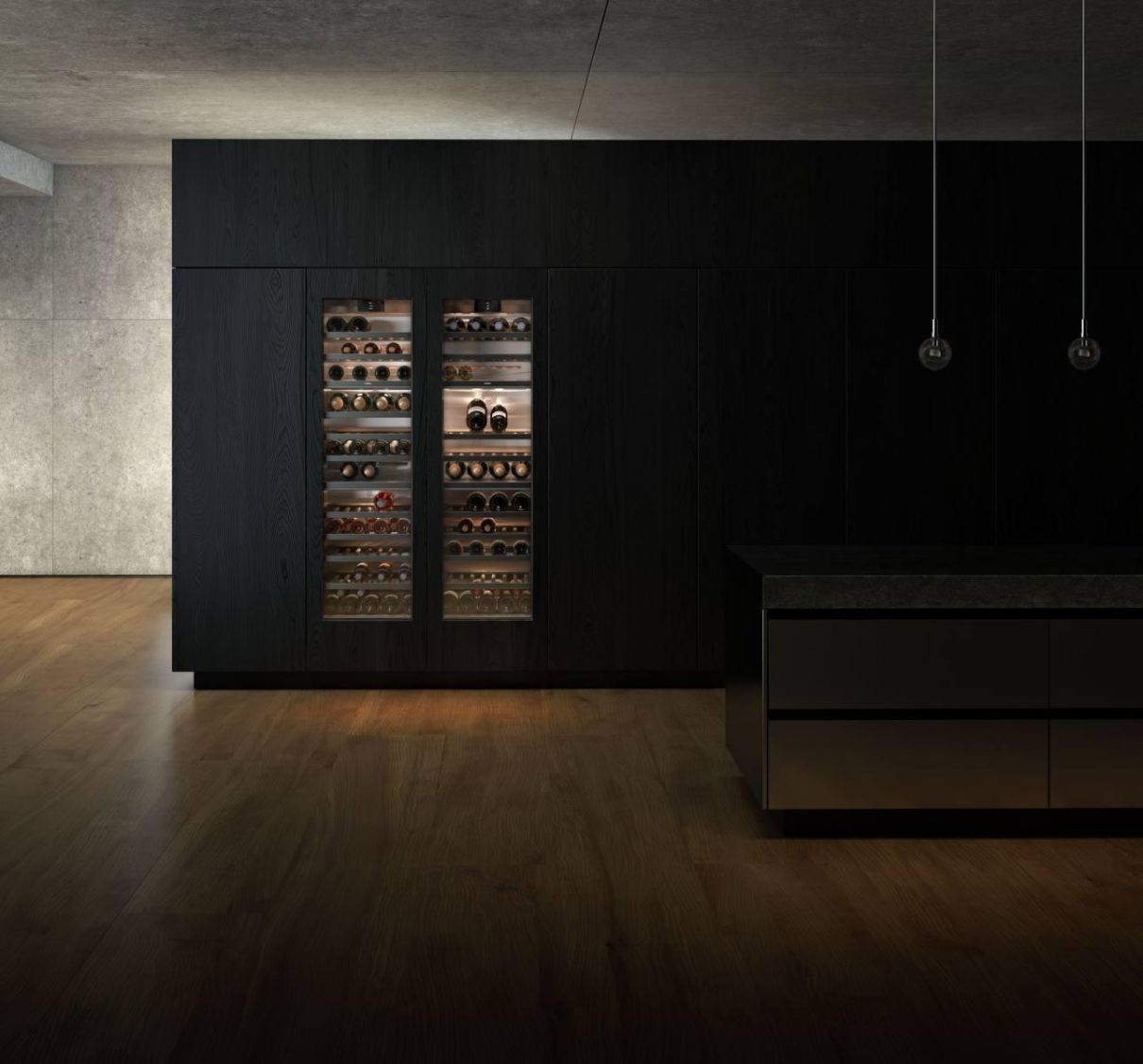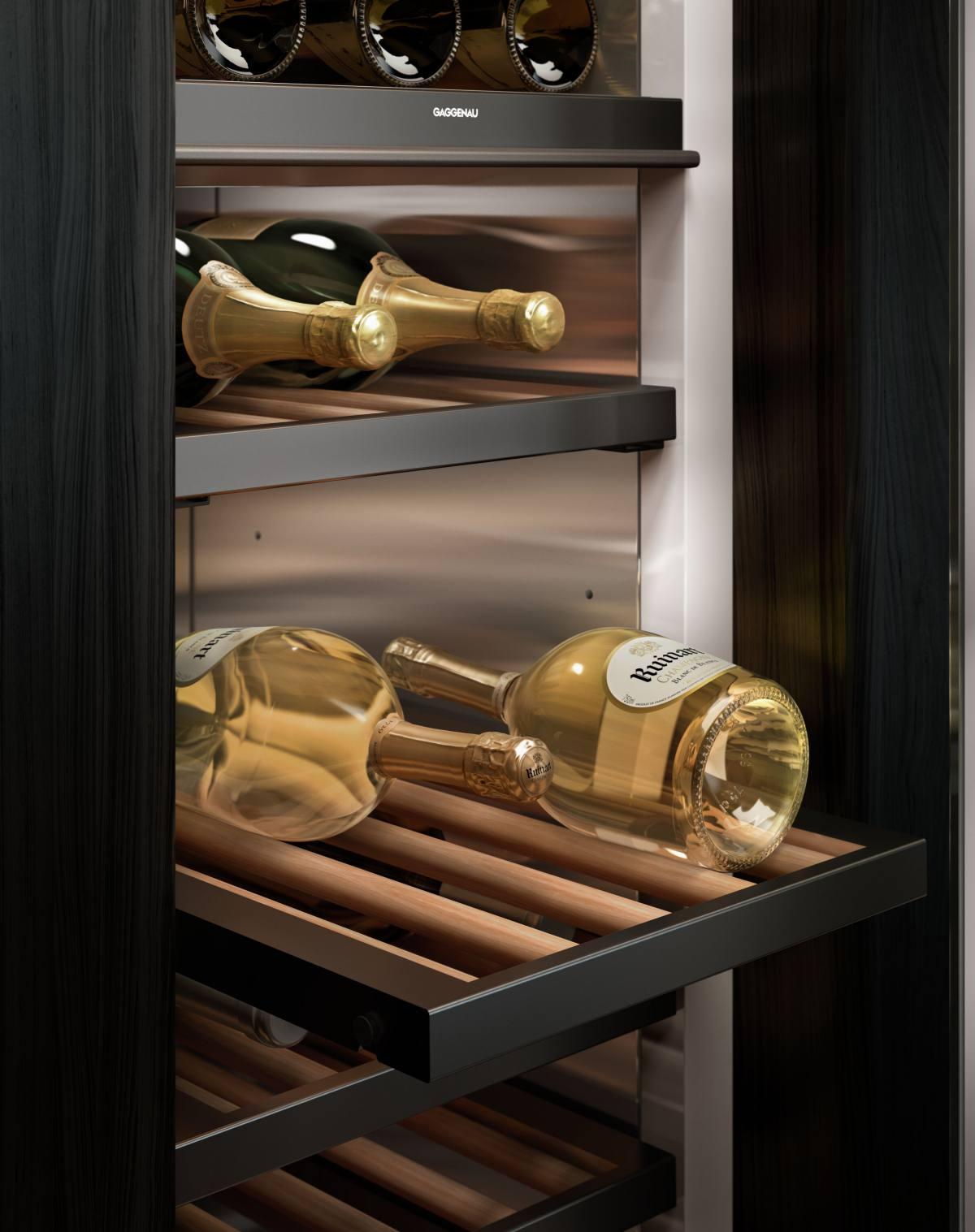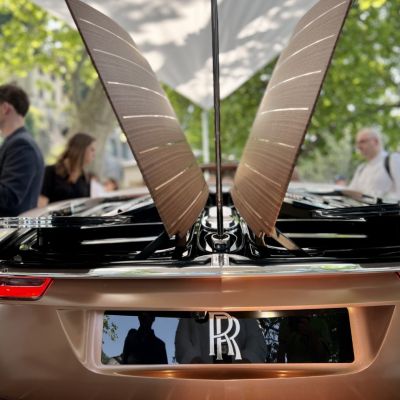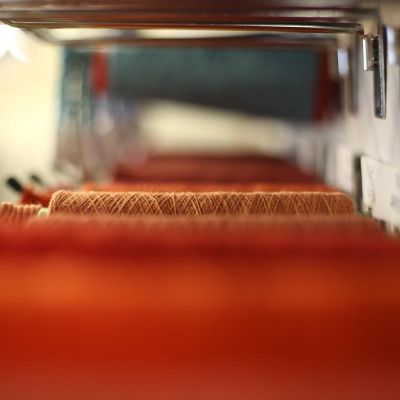An Oenophile's Dream

In a Gaggenau kitchen, doors close with reassuring solidity, knobs turn beautifully, surfaces gleam and every insert fits snugly into place and behaves exactly as it should.

The crowd at Milan’s Salone del Mobile isn’t easy to please. It is used to electrifying exhibitions, accustomed to delectable pop-ups, experiencing alluring launches and thrilling parties that are ten-a-penny. But among the creative offerings that littered the EuroCucina kitchen exhibition earlier this year, there was one that generated a genuine murmur of excitement from the design crowd.
Gaggenau created a pop-up that felt more like a stylish friend’s apartment than anything commercial. Focused entirely around the open-plan kitchen, it boasted an entrance area, garage, living space and garden, all united and interconnected with quiet walkways, natural light and plenty of authentic details.
Authentic if you’re a connoisseur of the finer things in life, that is. Gaggenau made this feel like an exhibit you’d want to get a mortgage for immediately thanks to a racing-green Aston Martin DB11 parked outside; interior wood fittings from Schotten & Hansen; modern furniture from Walter Knoll; and lighting installations from Occhio. There was a bespoke piece of art by Eduard Micus with a six-figure valuation; decorative shelves from Porro; and a selection of the world’s best vintages from Sotheby’s Wine cooling in the Gaggenau fridge.
“It was more like a home than a booth, as it showcased what life would be like with a Gaggenau kitchen for our targeted consumer,” says Sven Schnee, head of global branding at Gaggenau. “We wanted to take a step back from selling to allow our consumer to immerse themselves in our world. We wanted nothing to feel artificial, which is why we built our booth like a real house.”
As a brand, Gaggenau is famous for creating cleverly conceived, immaculately produced pieces. In a Gaggenau kitchen, doors close with reassuring solidity, knobs turn beautifully, surfaces gleam and every insert fits snugly into place and behaves exactly as it should. Yes, Gaggenau is all about refined engineering and sleek design. But it is also a brand of innovation, and it has recently marked itself out as a world leader in a particular form of kitchen appliance: the wine fridge, rack and cooler.
The Gaggenau wine-cooler cabinets are not only beautiful, they also allow every bottle to be cooled individually thanks to multiple climate zones with consistent temperatures that you can control to the last degree. This means you can store precious bottles of red alongside that rosé you plan on drinking at lunch. Clever touches mean the bottles are shielded from the vibration of the motor, while extendable oak or beech rods in the aluminium shelving protect wine from any aromas.
“This new range for Gaggenau is the very essence of refinement in the luxury kitchen appliance market,” says Sven Baacke, the brand’s head of design. “We see extraordinary interior aesthetics as something that should be seen in all spheres of life, including the kitchen. Staged beautifully and with perfect illumination, you are no longer simply storing wine, you are making a statement.”
Elsewhere in the Vario cooling 400 series is a built-in modular range of refrigerators, freezers and fridge freezers complete with stainless-steel interior and a dark anthracite aluminium exterior. Imperceptible clear-glass shelving and solid door racks are ubiquitous, and the lighting is less surgical and more atmospheric glow, thanks to glare-free LED bulbs. Push the handle-less door and the mechanism will open the portal for you. And even the door’s ice and water dispenser anticipates your needs by activating automatically as you approach.
And while this brand has fridges large enough to feed a family of 10, its future plans appear to be all about shrinking. “The modern incarnation of the kitchen was developed in the last century,” says Schnee. “But if you consider that in 10 years’ time, half the world will be single or living in cities and going out to dinner most nights, the surface available for the kitchen will be smaller and smaller.
“I see our clients having huge family homes elsewhere and a city kitchen that’s used for cooling Champagne and opening caviar,” he continues. “This means investing in beautifully made drawer products and steam counters, as well as wine coolers you want displayed in your living room. Ultimately, we are in an era where home appliances are no longer simply appliances — they are a piece of architecture.”









